Abstract
Six pigeons were trained on a modified multiple-schedule procedure. In a three-key chamber, the center key was lighted red or green, depending upon which component schedule was in effect. A response on this key transferred this color to each of two side keys, and responses on one of those keys produced reinforcers according to the component schedule. After 2 s, the side-key lights were extinguished, the center key was reilluminated, and a further center-key response was required to give access, as before, to the component schedules. Components alternated every 3 min. This limited-access procedure allowed both times spent switched into the side keys and time spent not switched in to be measured in the two components. Component reinforcer rates were varied over eight experimental conditions. Both component response rate and component time allocation were increasing functions of relative component reinforcer rate, and these functions were not significantly different. This finding implies that local response rates (responses divided by time switched in) were unaffected by changing component reinforcer rates on multiple schedules. Because a similar result was recently obtained for concurrent schedules, models of multiple and concurrent-schedule performance may need to consider only the time allocation of behavior emitted at equal tempo in the component schedules.
Keywords: multiple schedules, time allocation, response allocation, generalized matching, response rates, pecking, pigeons
Full text
PDF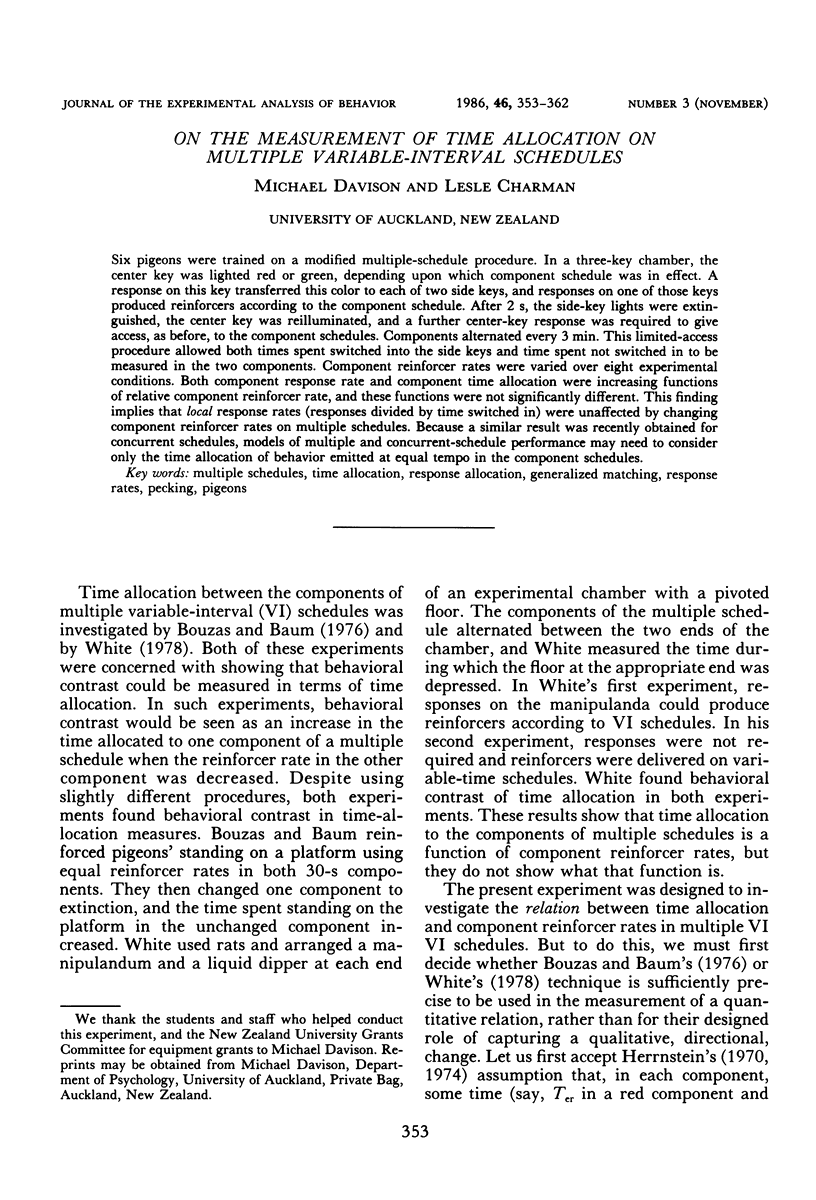
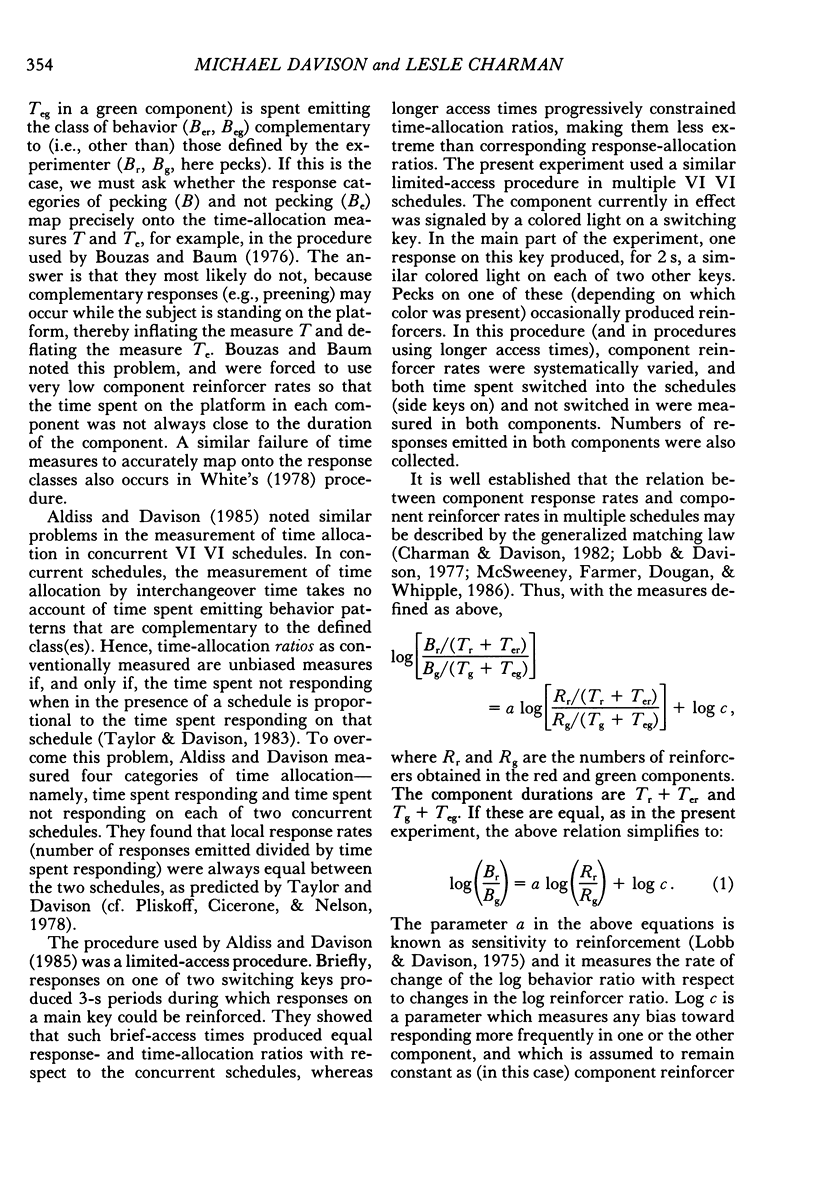
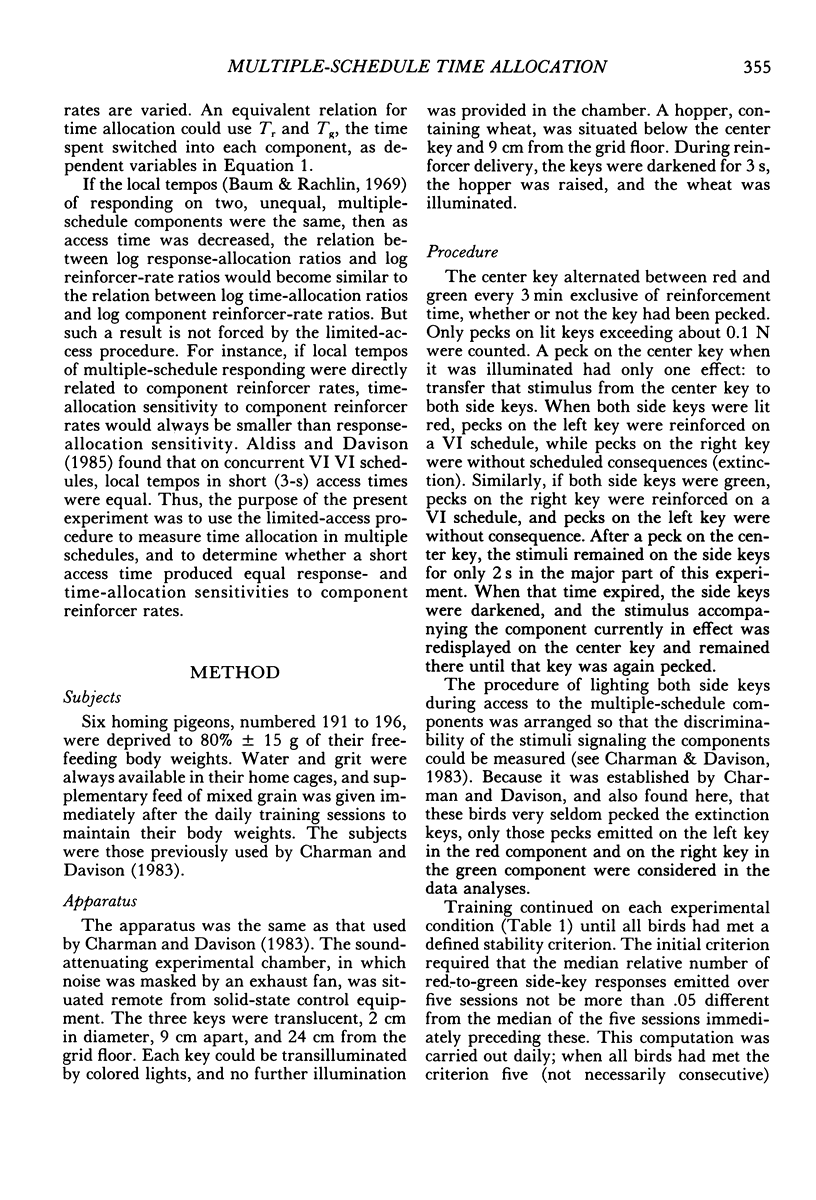
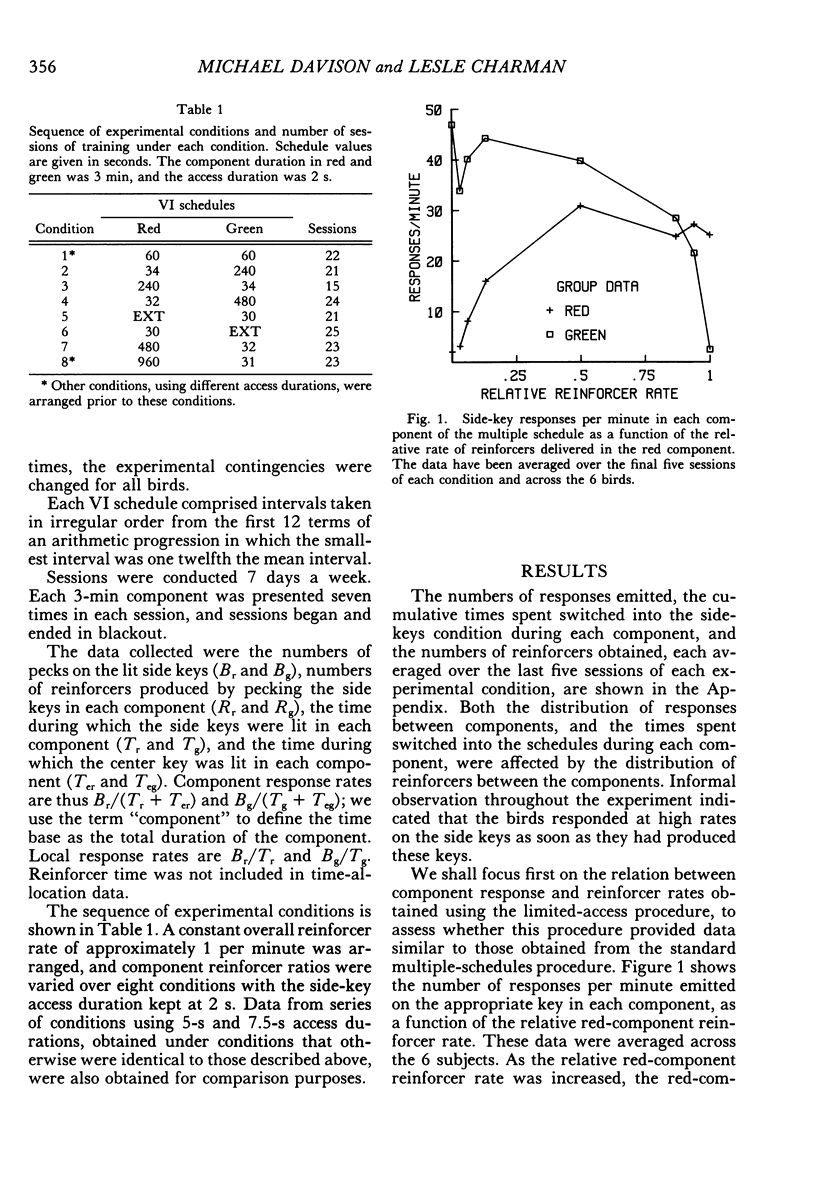
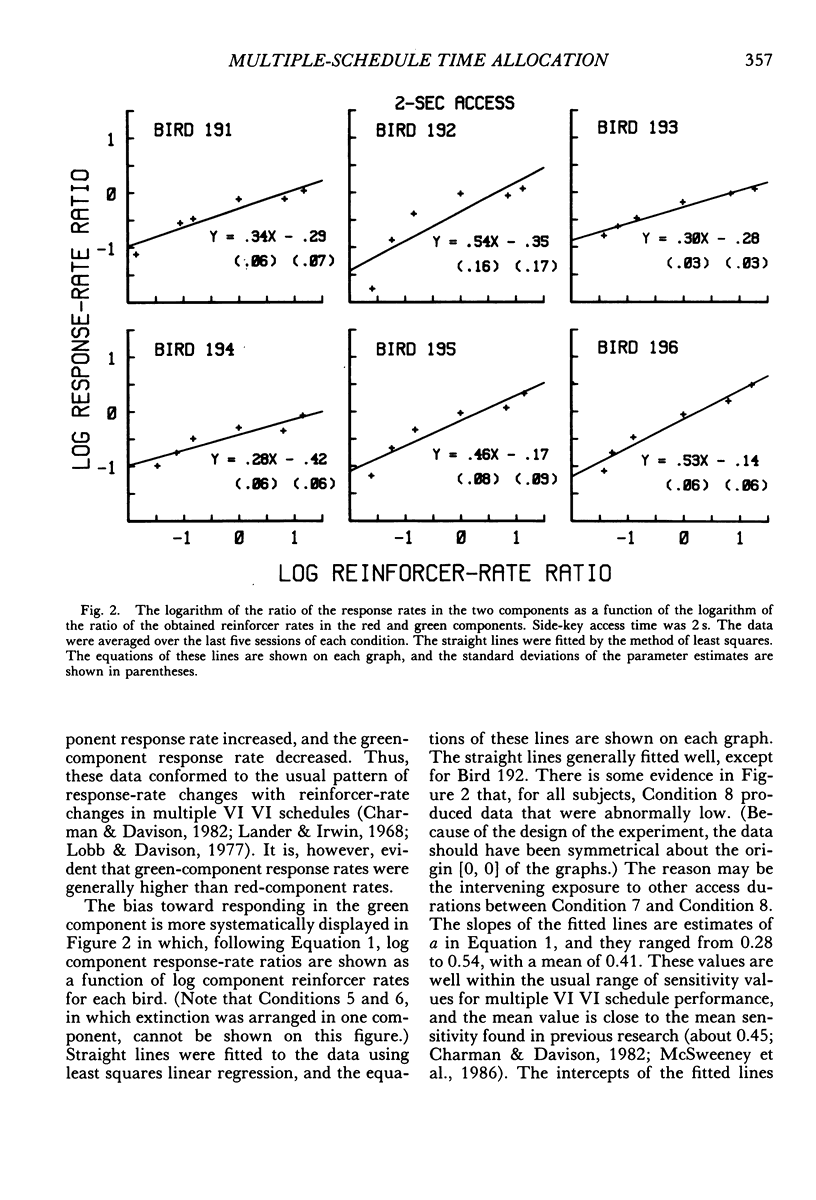
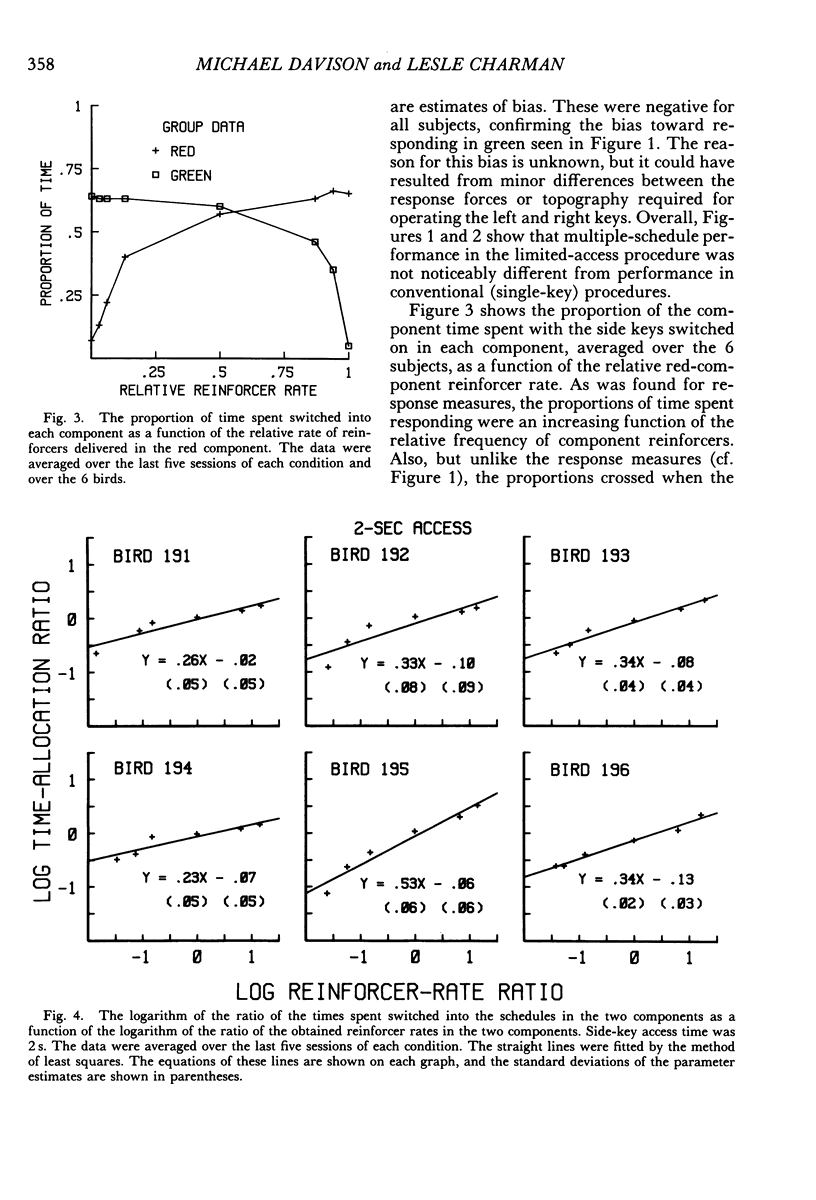
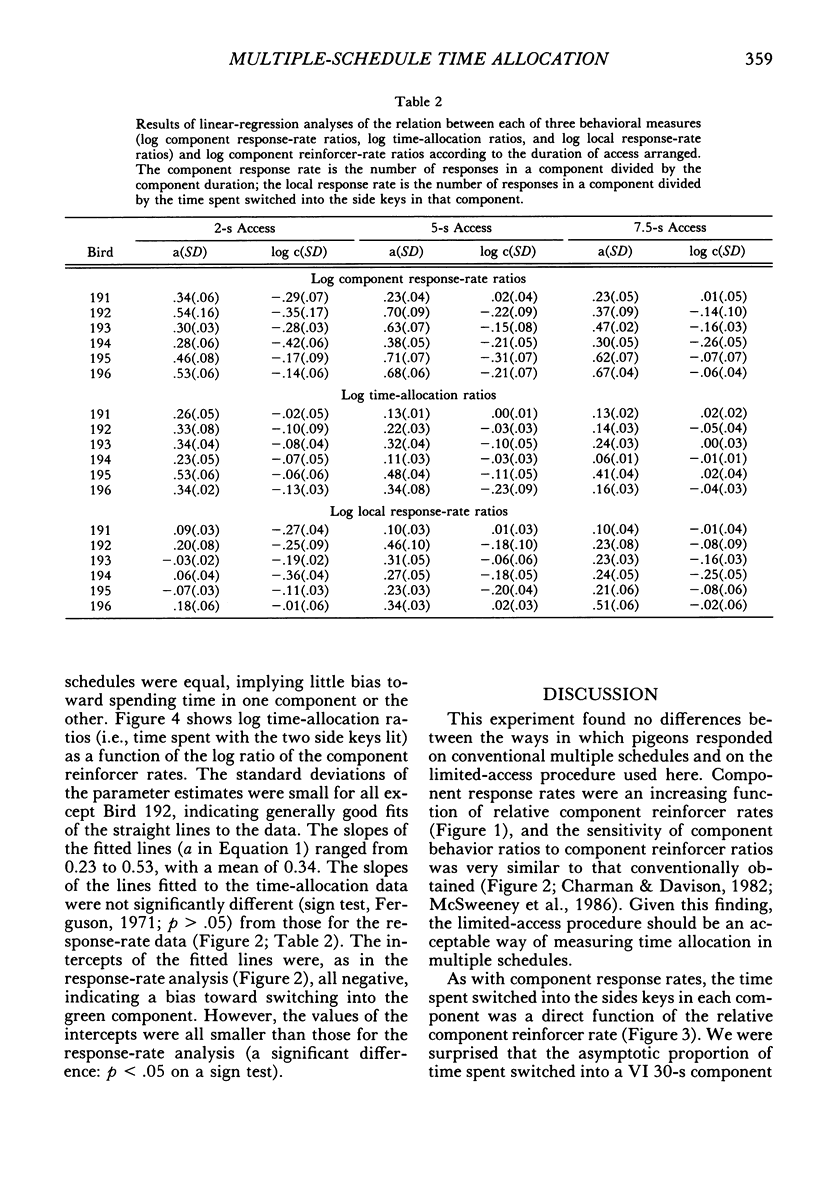
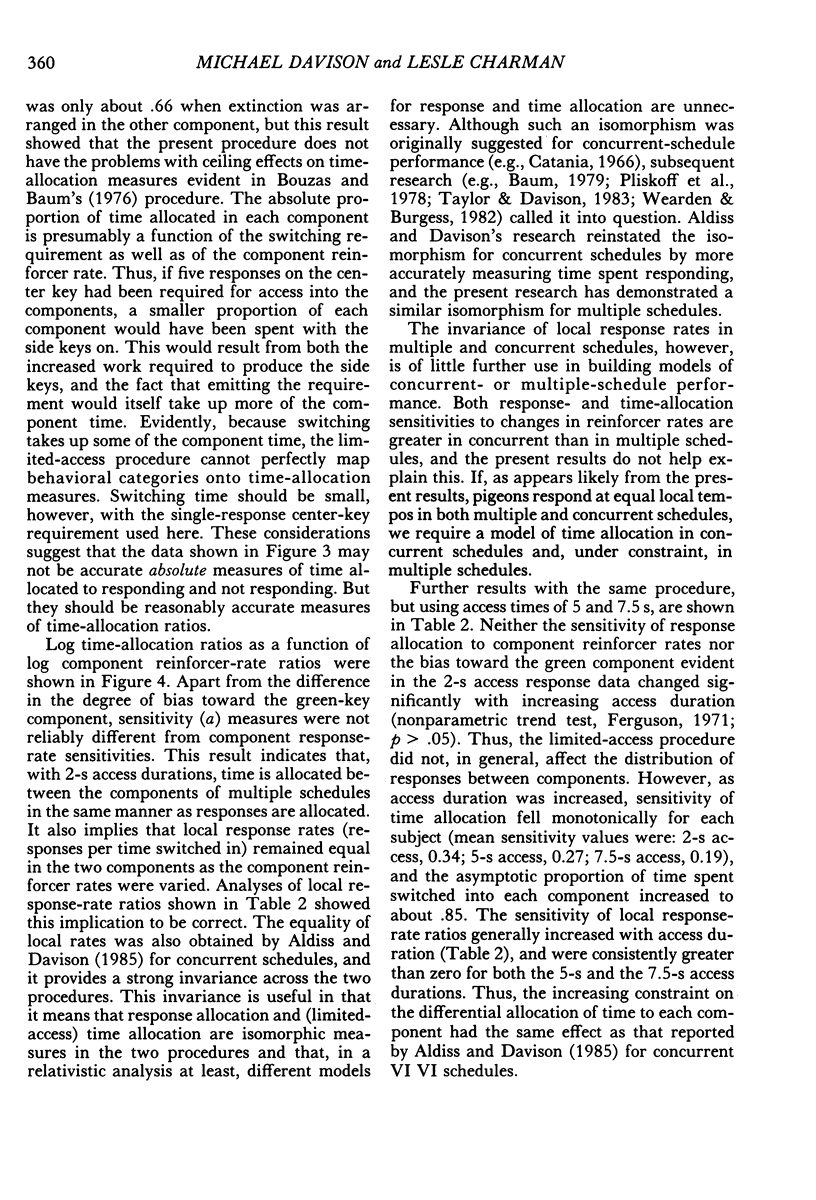
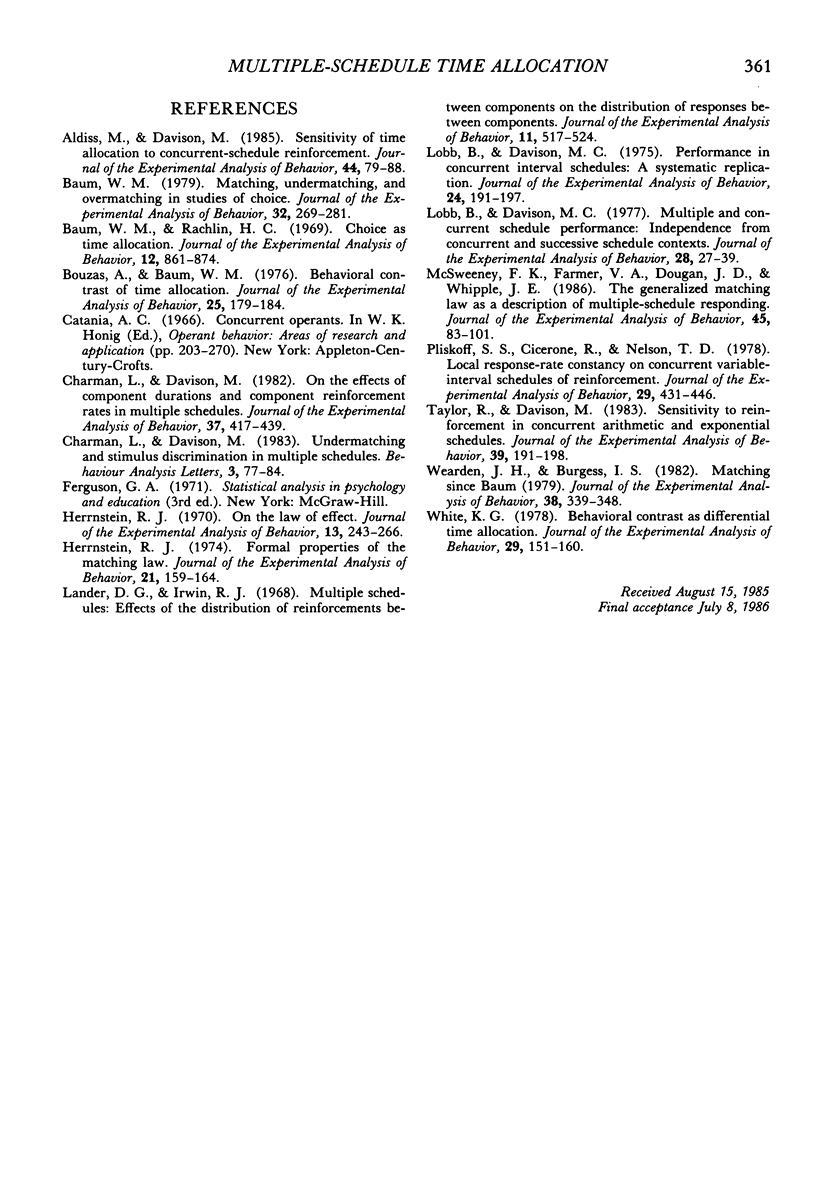
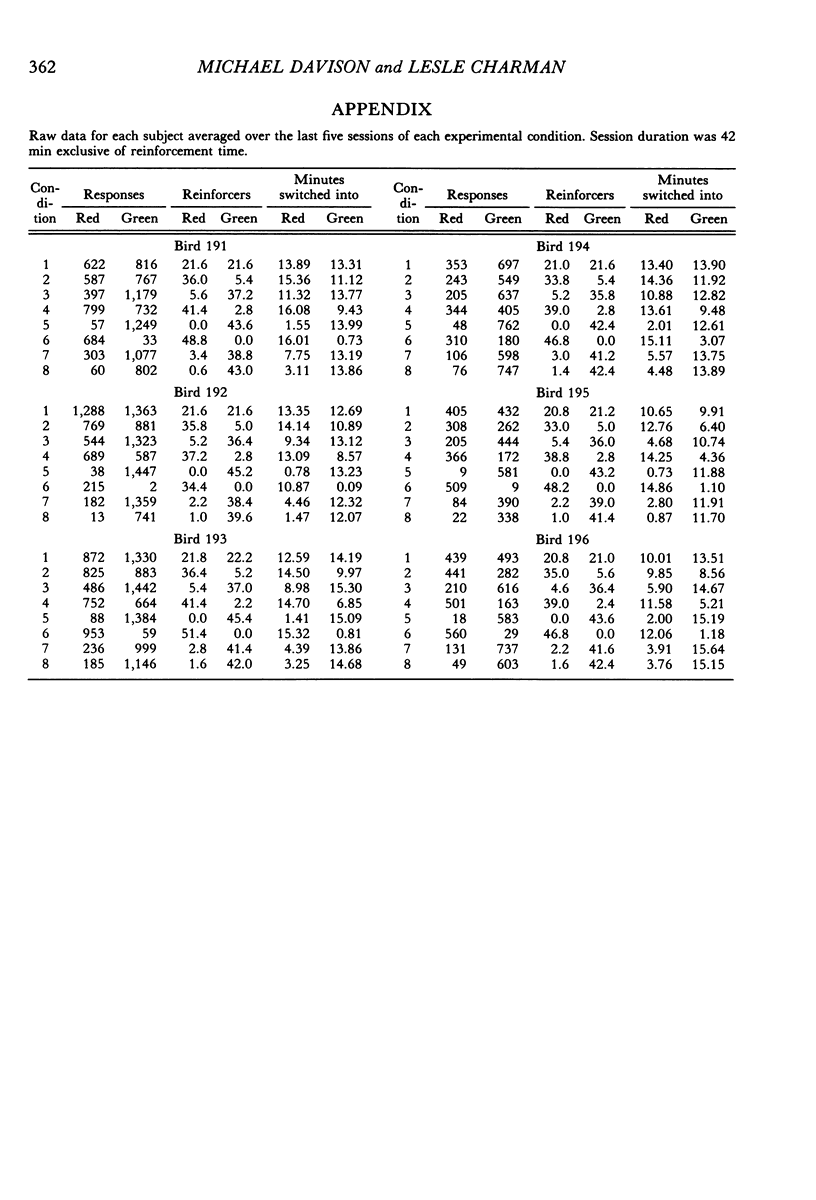
Selected References
These references are in PubMed. This may not be the complete list of references from this article.
- Aldiss M., Davison M. Sensitivity of time allocation to concurrent-schedule reinforcement. J Exp Anal Behav. 1985 Jul;44(1):79–88. doi: 10.1901/jeab.1985.44-79. [DOI] [PMC free article] [PubMed] [Google Scholar]
- Baum W. M. Matching, undermatching, and overmatching in studies of choice. J Exp Anal Behav. 1979 Sep;32(2):269–281. doi: 10.1901/jeab.1979.32-269. [DOI] [PMC free article] [PubMed] [Google Scholar]
- Baum W. M., Rachlin H. C. Choice as time allocation. J Exp Anal Behav. 1969 Nov;12(6):861–874. doi: 10.1901/jeab.1969.12-861. [DOI] [PMC free article] [PubMed] [Google Scholar]
- Bouzas A., Baum W. M. Behavioral contrast of time allocation. J Exp Anal Behav. 1976 Mar;25(2):179–184. doi: 10.1901/jeab.1976.25-179. [DOI] [PMC free article] [PubMed] [Google Scholar]
- Charman L., Davison M. On the effects of component durations and component reinforcement rates in multiple schedules. J Exp Anal Behav. 1982 May;37(3):417–439. doi: 10.1901/jeab.1982.37-417. [DOI] [PMC free article] [PubMed] [Google Scholar]
- Herrnstein R. J. Formal properties of the matching law. J Exp Anal Behav. 1974 Jan;21(1):159–164. doi: 10.1901/jeab.1974.21-159. [DOI] [PMC free article] [PubMed] [Google Scholar]
- Herrnstein R. J. On the law of effect. J Exp Anal Behav. 1970 Mar;13(2):243–266. doi: 10.1901/jeab.1970.13-243. [DOI] [PMC free article] [PubMed] [Google Scholar]
- Lander D. G., Irwin R. J. Multiple schedules: effects of the distribution of reinforcements between component on the distribution of responses between conponents. J Exp Anal Behav. 1968 Sep;11(5):517–524. doi: 10.1901/jeab.1968.11-517. [DOI] [PMC free article] [PubMed] [Google Scholar]
- Lobb B., Davison M. C. Multiple and concurrent schedule performance: independence from concurrent and successive schedule contexts. J Exp Anal Behav. 1977 Jul;28(1):27–39. doi: 10.1901/jeab.1977.28-27. [DOI] [PMC free article] [PubMed] [Google Scholar]
- Lobb B., Davison M. C. Performance in concurrent interval schedules: a systematic replication. J Exp Anal Behav. 1975 Sep;24(2):191–197. doi: 10.1901/jeab.1975.24-191. [DOI] [PMC free article] [PubMed] [Google Scholar]
- McSweeney F. K., Farmer V. A., Dougan J. D., Whipple J. E. The generalized matching law as a description of multiple-schedule responding. J Exp Anal Behav. 1986 Jan;45(1):83–101. doi: 10.1901/jeab.1986.45-83. [DOI] [PMC free article] [PubMed] [Google Scholar]
- Pliskoff S. S., Cicerone R., Nelson T. D. Local response-rate constancy on concurrent variable-interval schedules of reinforcement. J Exp Anal Behav. 1978 May;29(3):431–446. doi: 10.1901/jeab.1978.29-431. [DOI] [PMC free article] [PubMed] [Google Scholar]
- Taylor R., Davison M. Sensitivity to reinforcement in concurrent arithmetic and exponential schedules. J Exp Anal Behav. 1983 Jan;39(1):191–198. doi: 10.1901/jeab.1983.39-191. [DOI] [PMC free article] [PubMed] [Google Scholar]
- Wearden J. H., Burgess I. S. Matching since Baum (1979). J Exp Anal Behav. 1982 Nov;38(3):339–348. doi: 10.1901/jeab.1982.38-339. [DOI] [PMC free article] [PubMed] [Google Scholar]
- White K. G. Behavioral contrast as differential time allocation. J Exp Anal Behav. 1978 Mar;29(2):151–160. doi: 10.1901/jeab.1978.29-151. [DOI] [PMC free article] [PubMed] [Google Scholar]


